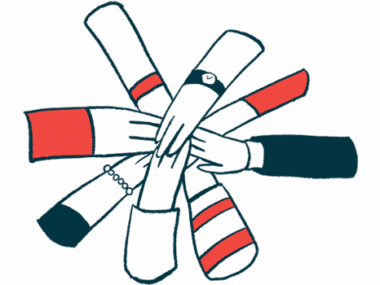Yom Kippur Brings Reflections on Sarcoidosis Life and Treatment
Columnist Kerry Wong is grateful to reach a new phase of disease management
Written by |

As I type this, it’s the evening of Yom Kippur, the final night of the Jewish High Holy Days. It’s a period of reflection and atonement, of forgiveness and renewal. It’s our new year, a time for new beginnings. And in a moment that seems serendipitous, I feel like I’m getting a new start, entering a new era of life with sarcoidosis.
Reflecting on my sarcoidosis journey to this point can be frustrating. What started with years of being dismissed by doctors because I “didn’t look sick” led to more years of rotating misdiagnoses and failed treatments. Even when doctors confirmed it was sarcoidosis (eight years into my search for answers), it took years to figure out which treatments would work best for me. And when comorbidities joined the party, we were always left with more: more questions, more symptoms, more medications, and more side effects.
With all that in mind, my latest doctor appointment was a refreshing change.
My rheumatologist is always thorough, cautious, and caring, and I trust her opinion over most others. We’ve spent the past year and a half weaning me off Acthar Gel, a repository corticotropin injection, as she wanted to go slowly to minimize withdrawal symptoms. At this visit, she said I could finally stop it completely.
I have a long history with Acthar — and a long history leading up to it, too. When doctors first diagnosed me with “some kind of arthritis, probably autoimmune,” they immediately started me on prednisone. Like so many others, I developed a love-hate relationship with it. The steroid helped reduce the pain and swelling in my joints, but its side effects became impossible to endure.
As my previous rheumatologist tapered my steroid dosage, my initial symptoms came back with a vengeance. It wasn’t just my feet and ankles that swelled — my hands, knees, and entire body became inflamed. I couldn’t stand on my own, open a pill bottle, or even pick up a drink to take those pills.
It was during that time that my doctors were able to identify the sarcoidosis that prednisone had likely masked until then. With this new diagnosis, they immediately started me on Acthar. As my doctor explained, it would stimulate my body to produce more of its own natural steroid. That meant it would offer similar benefits to prednisone, but be less harmful than synthetic steroids.
For years, I referred to Acthar as my “miracle drug.” When I awoke in the morning after my first injection, there was a substantial, noticeable difference. I was still swollen, but not as much. I was still in pain, but I could move a bit. And my condition continued to improve.
Unfortunately, since Acthar was effectively increasing my steroid levels, it eventually led to similar long-term effects as prednisone. After several years, we knew it was time to move on. With the help of a steroid-sparing medication and a lot of time, we were able to officially remove it from my list. Adding to the excitement, this means I no longer have to give myself injections every week!
During this visit, we also talked about COVID-19 and the extra protections I take as someone at higher risk due to autoimmune disease and immunosuppressive medication. I’ve been fully vaccinated and boosted and generally double-mask with an N95 and a cloth mask with a filter insert. Still, I’ve avoided going indoors anywhere but for medical appointments, and outdoors I avoid even small crowds.
As we talked about the new omicron booster and available treatments, my doctor encouraged me to take baby steps: I can now go into a store, for instance. Once I’ve had the bivalent booster, I’ll be able to eat inside a restaurant. I’m still anxious about that, but research has shown that immunoglobulin therapy, the weekly infusion I get to treat sarcoidosis-associated small fiber neuropathy, now contains COVID-19 antibodies from the plasma donations used to manufacture it, so that’s another layer of protection.
It feels like I’ve reached a new phase in my disease management, and I’m grateful. Ironically, this feels better than when my doctor said I was in remission-ish. It’s a step toward feeling more normal, toward being more independent. I can run my own errands instead of asking even more of my husband. And we can begin to make plans, to go places and see people. I can begin to feel — just a smidge — like myself again.
In the spirit of Yom Kippur, I forgive the doctors who didn’t know better and the treatments that did more harm than good. I’m grateful for my current team and optimistic about our next steps. And for each of you reading this, I wish you joy, peace, and improved health in the new year.
Shana Tova. שָׁנָה טוֹבָה.
Note: Sarcoidosis News is strictly a news and information website about the disease. It does not provide medical advice, diagnosis, or treatment. This content is not intended to be a substitute for professional medical advice, diagnosis, or treatment. Always seek the advice of your physician or other qualified health provider with any questions you may have regarding a medical condition. Never disregard professional medical advice or delay in seeking it because of something you have read on this website. The opinions expressed in this column are not those of Sarcoidosis News or its parent company, Bionews, and are intended to spark discussion about issues pertaining to sarcoidosis.







Leave a comment
Fill in the required fields to post. Your email address will not be published.